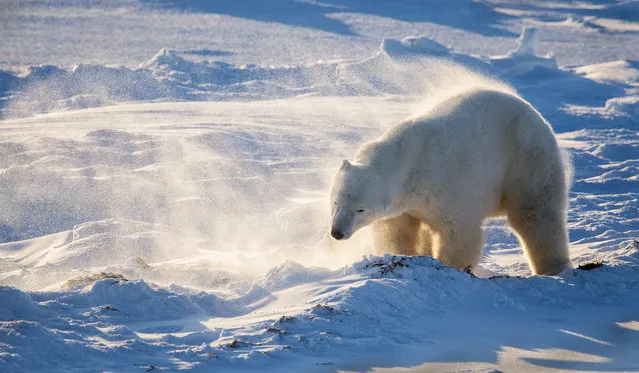
Male polar bear shaking off snow by Ian Stone in Hudson Bay, Canada. For two hours before the photo was taken, a blizzard had completely covered the surrounding area and the polar bear in snow. Ian waited until the weather calmed to capture the bear standing up and shaking the snow from its fur, ready to continue with its journey to the sea to hunt for seals. (Photo by Ian Stone/2019 Royal Society of Biology Photography Competition)
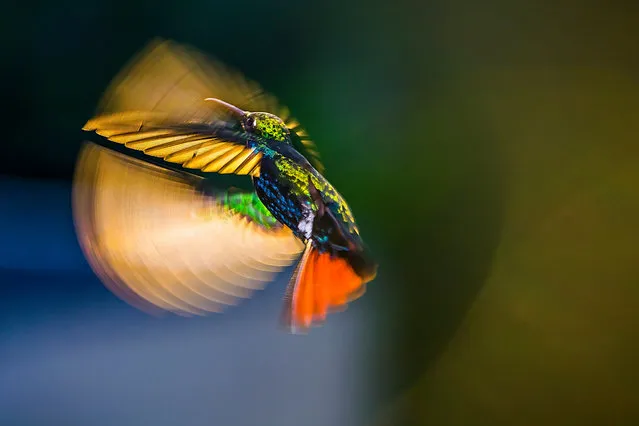
Flying over sunshine by Kristhian Castro in Cali, Valle del Cauca, Colombia. This photo captures the stunning greens, blues and oranges of the Anthracothorax nigricollis hummingbird as it flies during sunset. Members of this family of birds can flap their wings up to 75 times per second. At faster shutter speeds (1/200sec) the wings appear static, so Kristhian used the setting sun as a backdrop to capture its movement. (Photo by Kristhian Castro/2019 Royal Society of Biology Photography Competition)
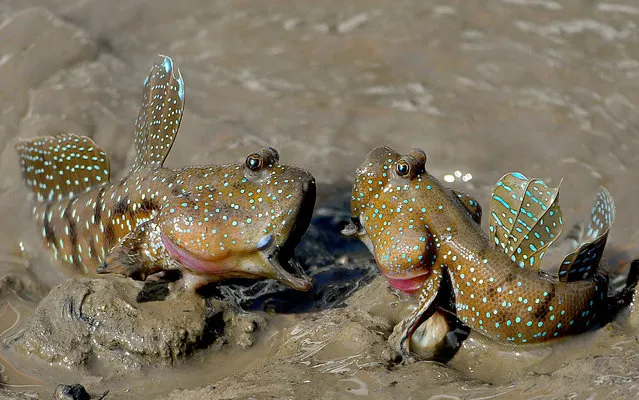
Territorial Fight by Sundhir Gaikward in Sundarban tiger reserve, India. Mudskippers are highly territorial and usually chase away intruders. They are amphibious fish, meaning they can leave the water for extended periods of time; mudskippers in particular are able to survive in air for multiple days. They breathe through the moist lining of their mouth and throat, so prefer high humidity, and are often found in muddy mangrove swamps. (Photo by Sundhir Gaikward/2019 Royal Society of Biology Photography Competition)
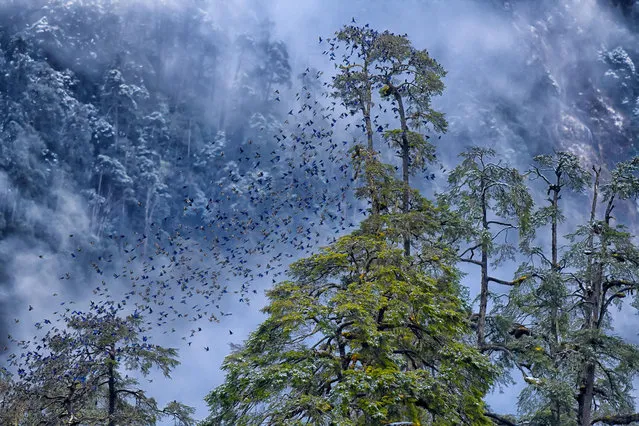
Falling leaves are blue by Kallol Mukherjee in North Sikkim, India. The near-symmetrical flight of a flock of more than 200 Grandala birds. Capturing these birds on film can be a challenge, as they remain at a very high altitude in Himalayan terrain for almost eight months of the year. The birds will descend to 8,000ft only when the upper areas are completely covered in snow and food becomes scarce. (Photo by Kallol Mukherjee/2019 Royal Society of Biology Photography Competition)
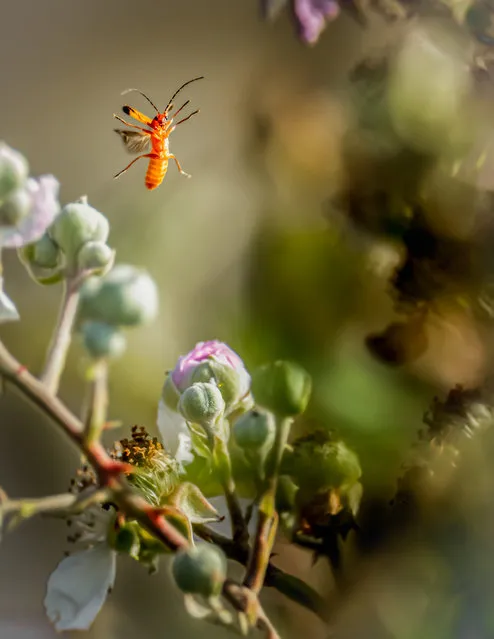
Demob Happy by Nick Edwards in Thorness Bay, near Cowes, Isle of Wight, UK. Have you ever seen a beetle smile? This red soldier beetle looks elated as it appears to strike a pose for the camera. The common red soldier beetle is usually spotted from June to August, often in mating pairs, in grasslands and woodlands. There are about 40 different species of red soldier beetle in the UK, all with slightly different markings. (Photo by Nick Edwards/2019 Royal Society of Biology Photography Competition)
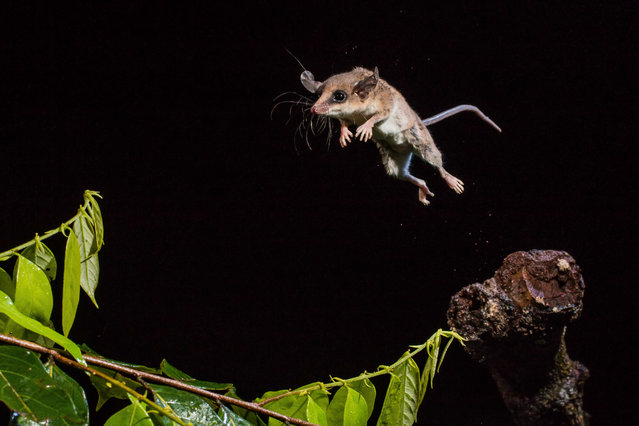
Tropical acrobatics by Adrià López Baucells in Manaus, Brazil. An unidentified South American marsupial, although the characteristic black markings on its face indicate it may be a mouse opossum. These small creatures are nocturnal and feed on bugs, fruit and bird eggs. (Photo by Adrià López Baucells/2019 Royal Society of Biology Photography Competition)
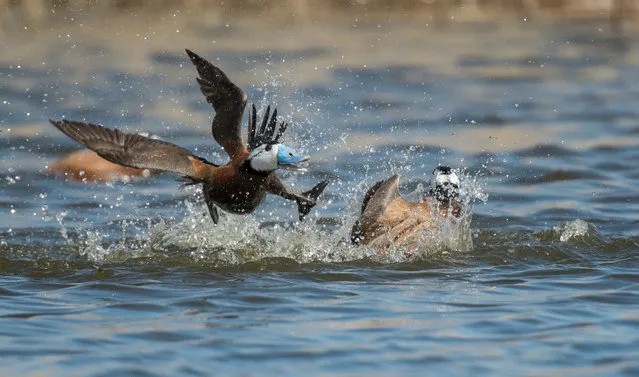
Fighting by Carlos Perez Naval in Navaseca, Ciudad Real, Spain. Shortlisted for young photographer of the year: two white-headed ducks fight over something in the water. (Photo by Carlos Perez Naval/2019 Royal Society of Biology Photography Competition)
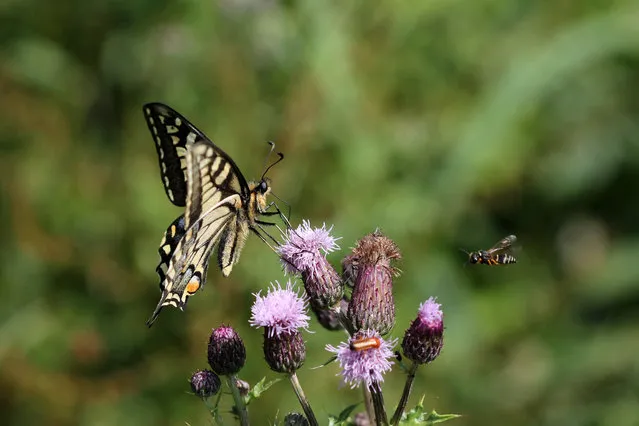
Hectic nature by Will Lawson in Hickling Broad, England. Shortlisted for young photographer of the year: a swallowtail butterfly sits still for a moment while feeding. Even when such a majestic insect is resting, plenty else is rushing around in a frenzy, such as the wasp in the right of the frame. (Photo by Will Lawson/2019 Royal Society of Biology Photography Competition)
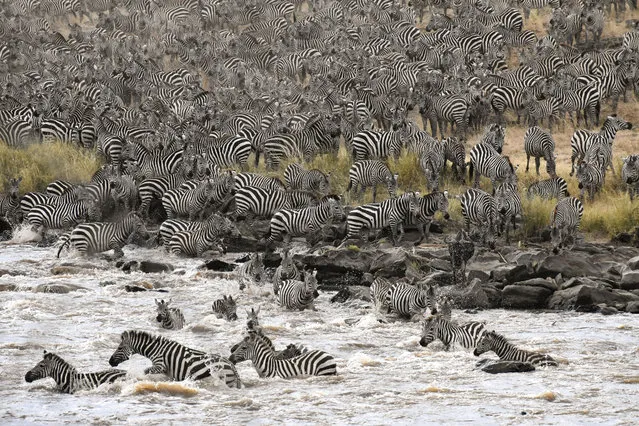
The stampede by Lillian Quinn in Maasai Mara national reserve, Kenya. Shortlisted for young photographer of the year: a stampede of a herd of zebras crosses the reserve. The zebras, hoping to dodge crocodiles as they head to the other side of the river, make the journey once a year. (Photo by Lillian Quinn/2019 Royal Society of Biology Photography Competition)
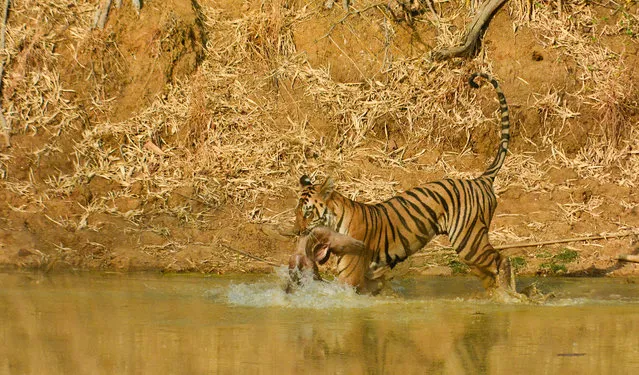
Playtime by Amogh Gaikwad in Tadoba tiger reserve, India. Shortlisted for young photographer of year: after capturing its dinner, this 15-month-old tiger cub decides to play with its dead prey. (Photo by Amogh Gaikwad/2019 Royal Society of Biology Photography Competition)
10 Oct 2019 00:03:00,
post received
0 comments
